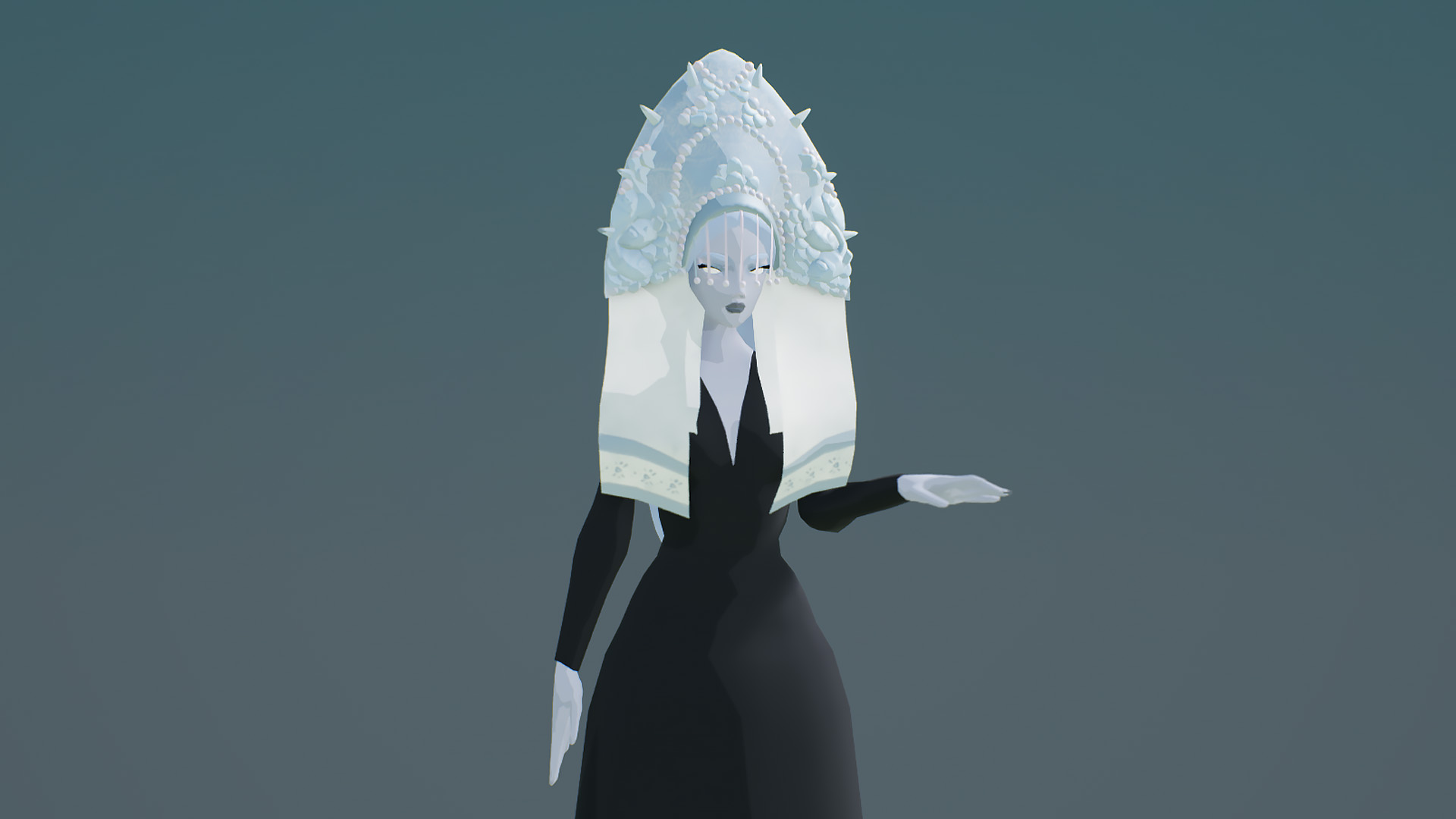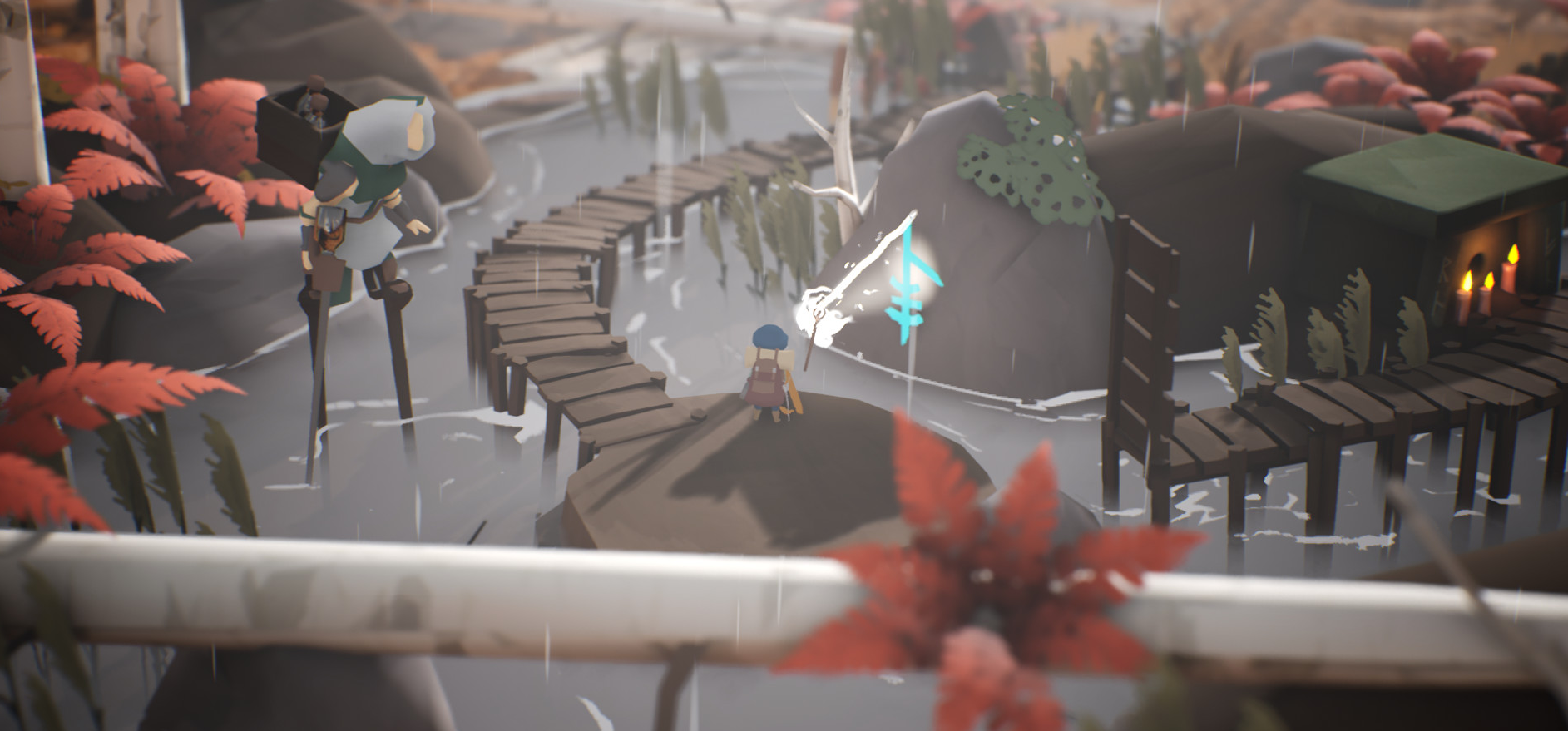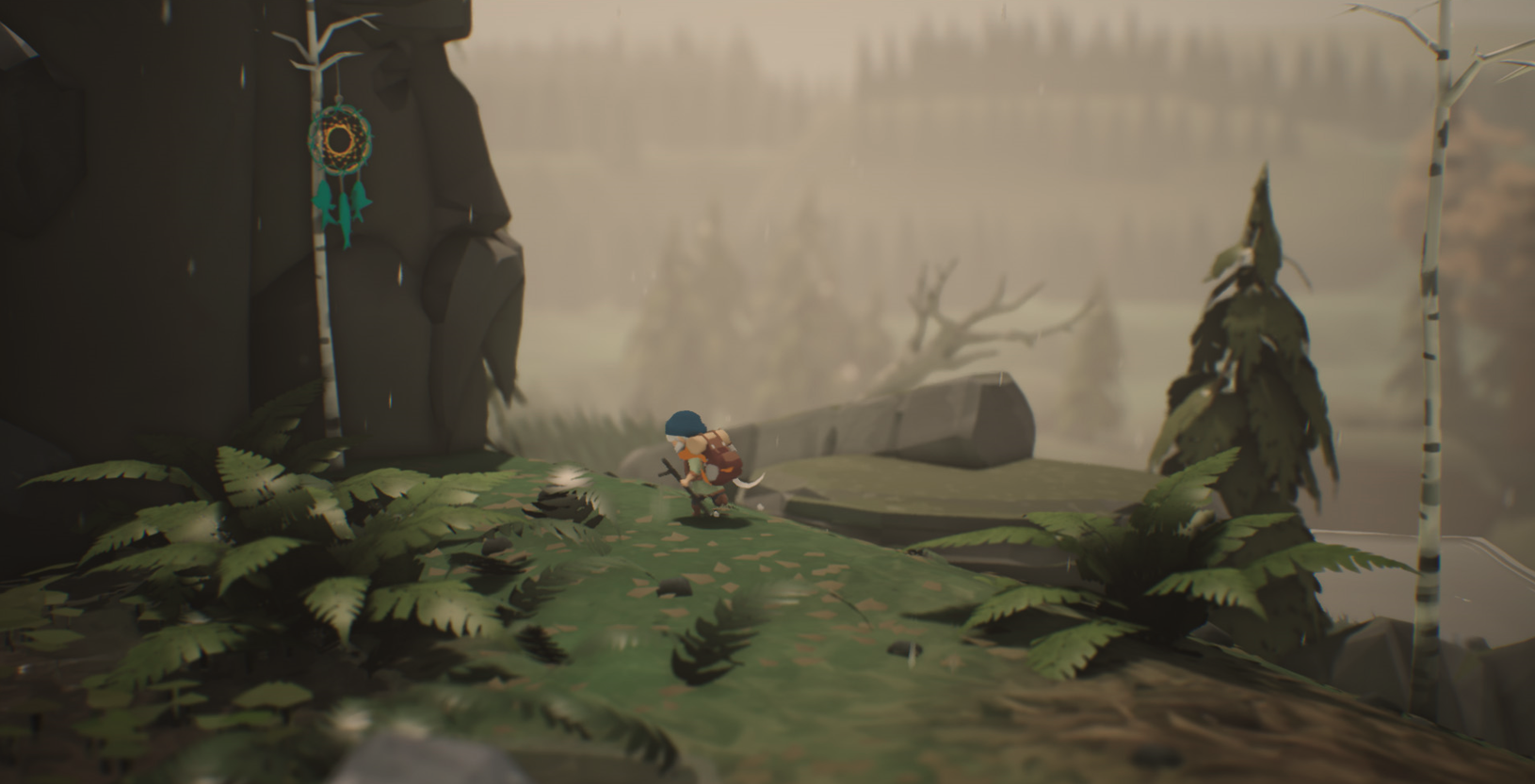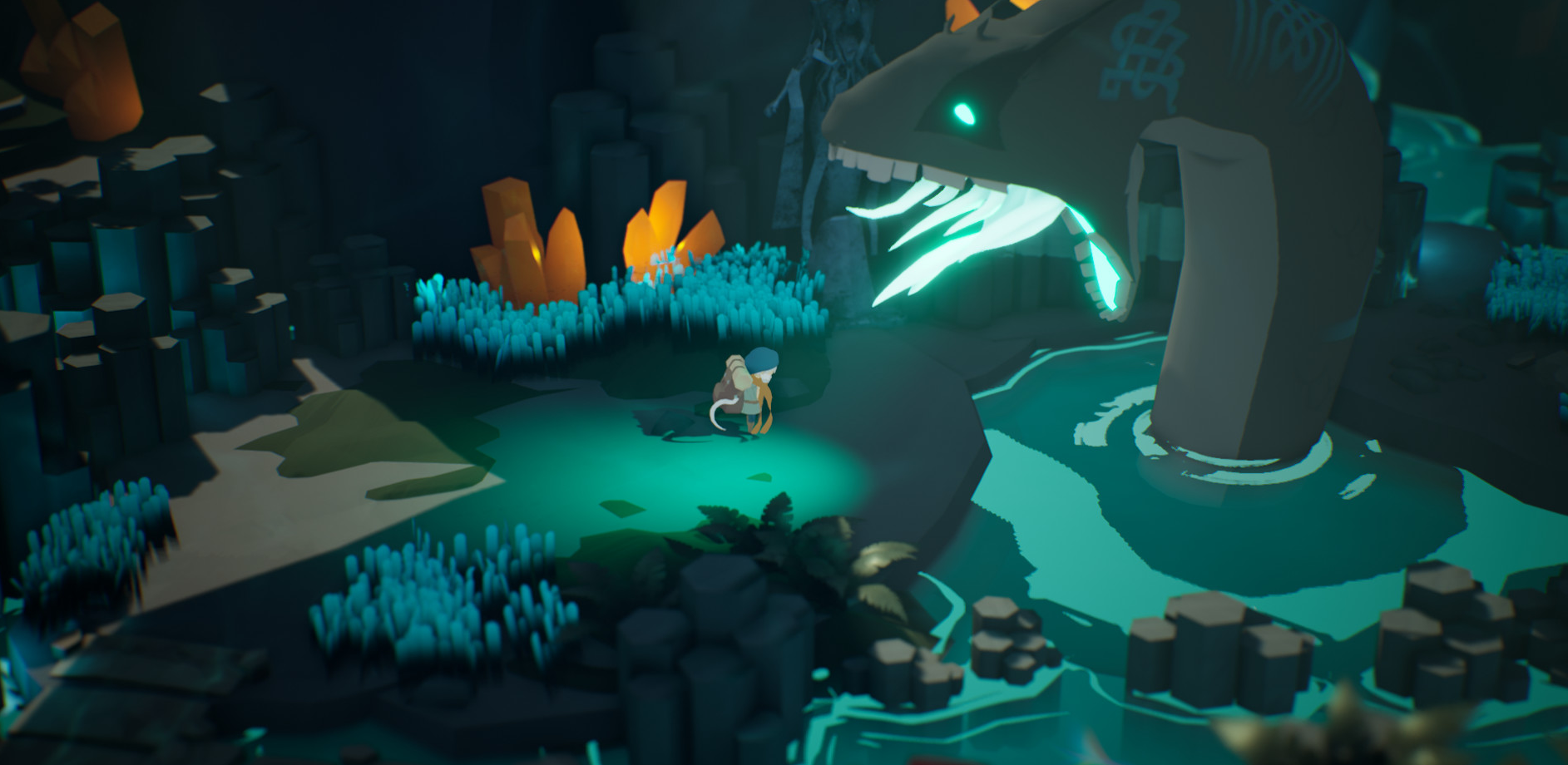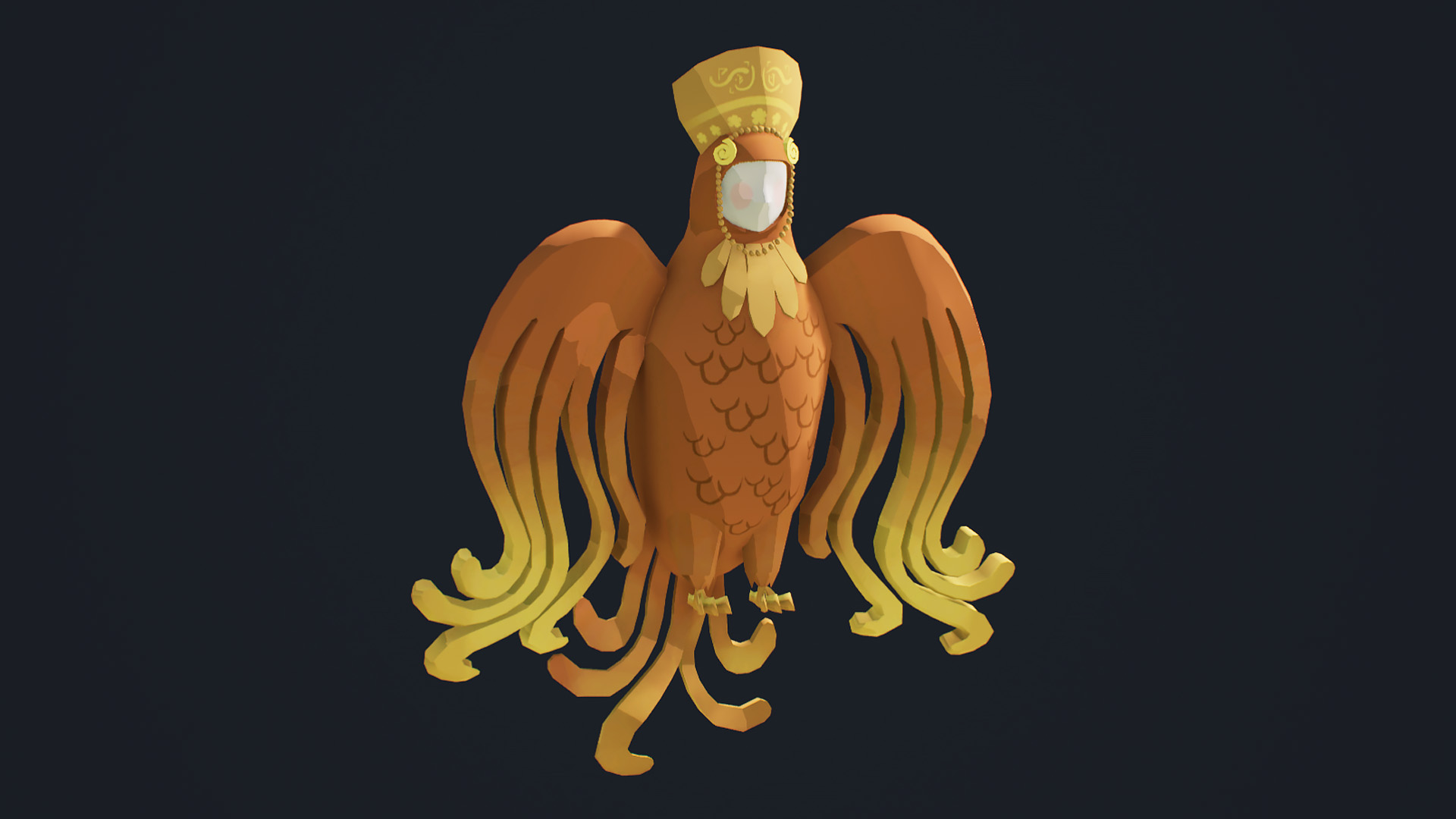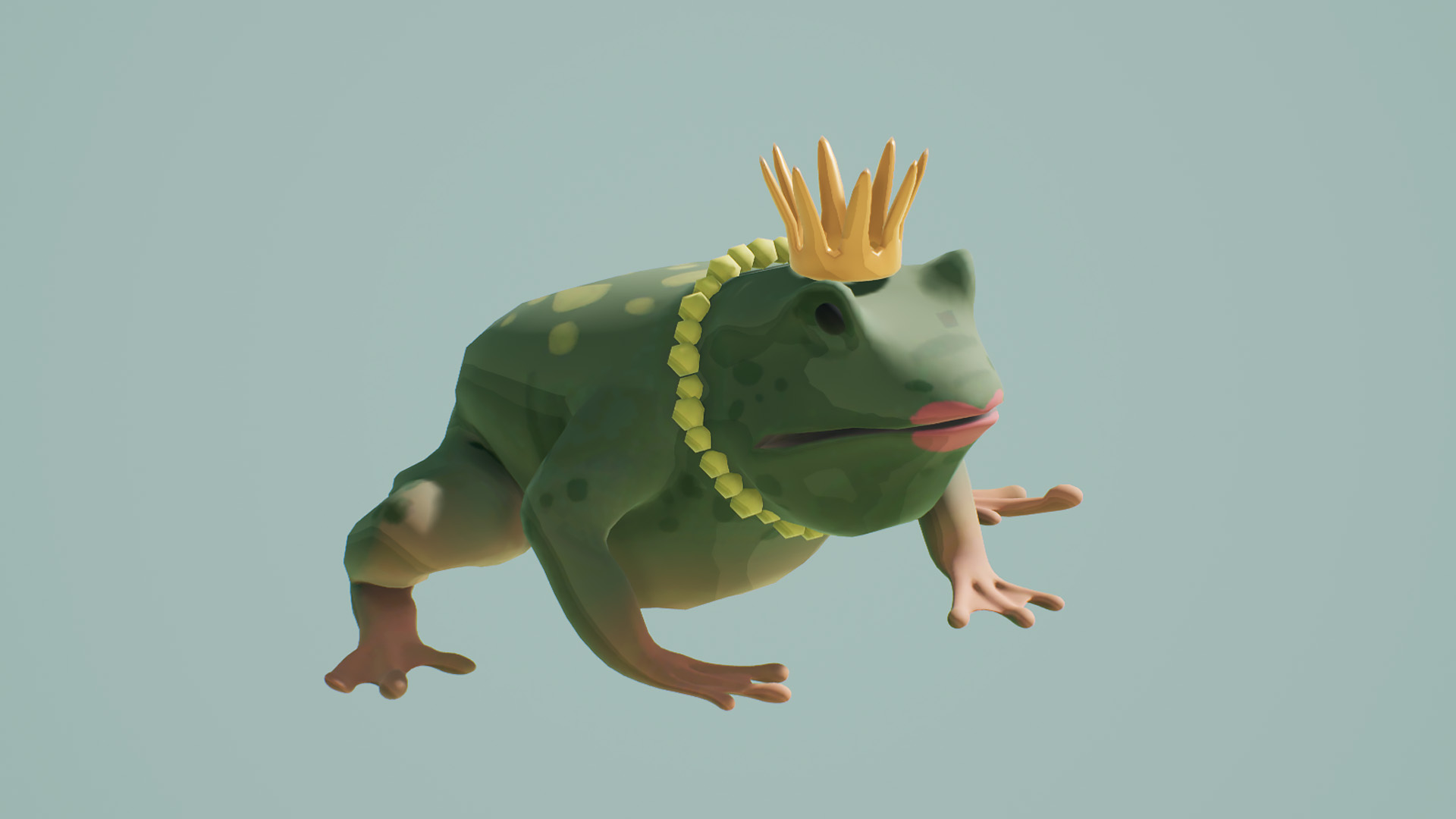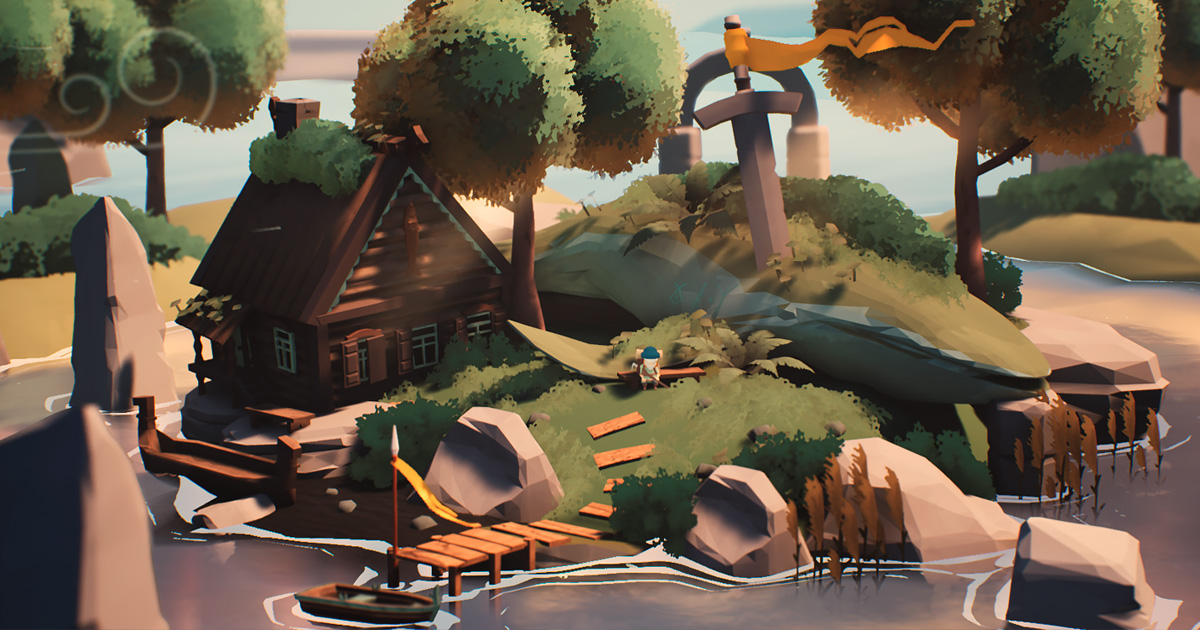What can be wrong with working with Annapurna, what pitfalls are there when communicating with Versus Evil and why not all developers should cooperate with Raw Fury and Daedalic,” he said in an interview App2Top.ru Sasha Goodwin, developer of the anticipated indie blockbuster Selfloss.
Oleg Nesterenko, Editor App2Top.ru : Sasha, tell me a little about yourself first.
Sasha Goodwin
Sasha Goodwin, indie developer, author of Selfloss: I’ve been in game development since about 2016. Then my student project won the grand Prix at one of the gaming conferences. Then he released two full—fledged commercial projects on Steam without a publisher – Algotica Iterations (2017) and Mechanism (2018).
Did you do them alone?
Goodwin: Yes, I made them completely myself, without involving third-party developers or marketing specialists. Like most indie beginners, I then thought that since I was making a game, I knew better than anyone how to promote it — and there was no need to pay someone for publishing interest. Since then I have matured as a developer.
And now you are running your third commercial project — Selfloss. Did you start working on it immediately after working on Mechanism?
Goodwin: Yes and no.
I started doing Selfloss at the end of 2018. However, at that time I devoted a lot of time to graduate school. I really started developing it only in the summer of 2020.
What is the difference between working on Selfloss and working on previous projects?
Goodwin: From the most obvious: Selfloss is being developed on the Unreal Engine (I sawed the previous ones on Unity).
Plus, as soon as I started creating it, I realized that this time I want to do not only production, but I want to study everything that is happening around, including marketing and publishing.
Usually indies run away from this. Why do you need such an experience?
Goodwin: After the launch of Mechanism, I came to the idea that in order to understand how the industry works, it is necessary to work with people who promote the game, communicate with sites.
Give up self-publishing?
Goodwin: Yes, try to launch the game with publishers, but first, of course, to establish a dialogue with them.
And how? Did it work?
Goodwin: In 2019, Selfloss was lit up at once as part of several events. After that, publishers began to write.
At first, they wrote small ones, for example, Crytivo (by the way, I had a very positive impression from communicating with them, it was even embarrassing that I let down our communication then on the brakes). Then the bigger guys pulled up.
In just three years since the start of development, I’ve talked to probably 40-50 publishers. Of these 50, only two were addressed by me. These are Annapurna and Versus Evil. The others initiated the communication themselves.
In 2019, did you understand what exactly you expect from publishers?
Goodwin: The problem was that I didn’t really understand what to do with the game.
Publishers liked her, they offered some specific figures on the division of income, they were ready to conduct a dialogue…
And at that time I didn’t know when I would finish the game, I was constantly postponing calls and meetings. At some point, they naturally stopped calling.
It was awkward!
Goodwin: That’s not the word.
You know, it seems to me that publishers often don’t understand developers. It may seem to them that developers are sabotaging negotiations by not answering specific questions or postponing negotiations.
But it’s not about sabotage.
There are business people working in publishing houses who are waiting for a clear answer from you, who think that you have it. They don’t always understand that development is a creative process.
The developer sometimes simply does not know the answer. He may be insecure, he may take answers “from the ceiling”, he may overestimate himself.
For example, publishers often asked me when the game would be released approximately. I’ve often said that a year later, even when the game was still in the early stages of development.
Even in 2020, when I finally formulated a specific vision of the game, when I realized what it was about, how to position it, when I finished working on the core of the game, figured out what mechanics would be in the game, what plot moves, even at this stage I didn’t take much into account. And as a result, I have repeatedly told publishers that the game will be released in a year.
Now it’s coming to the end of 2021, and the game is still in development, including due to the fact that it’s impossible to predict everything here.
For example, it took me a lot of time to hone the gameplay, mechanics. To do this, it took quite a lot of iterations, playtests on the gameplay part. I’ve only run a public demo about 3 times to collect feedback.
And in the end, what made it possible to find the “right” gameplay?
Goodwin: There’s a whole story here.
I promote Selfloss most actively on Twitter. I have already exceeded 6 thousand subscribers there.
At some point, I post a beautiful gif and Jeff Keighley from The Game Awards writes to me “in person”. I didn’t even immediately believe it was him. But he wrote from an account with 2 million subscribers, so there were no other options.
He wrote: “Cool game. Is there a demo to play?“, he immediately explained that his team is selecting indie games that will be shown at The Game Awards 2020.
I had a demo at that time, but I didn’t like it. I had to redo it urgently for the event.
It was a terrible stress. 2-3 weeks I redid it, slept for 2-3 hours. I dug through a huge layer of the game and found that gameplay tempo, gameplay flow, about which I suddenly realized: “Oh! This is it.”
I sent this demo. As a result, Selfloss turned out to be one of the ten games selected to be shown on the show.
Then there were several more iterations for different Stimovsky festivals. About 12 thousand people played one of them.
The coolest thing: in 90% of the case there was a super-positive feedback. Players started actively writing to me: by mail, on Steam forums, on Twitter, on VKontakte. Many noted exactly the things that I have reworked, which I have corrected.
This was the turning point. It was then that I realized that I could talk to publishers right now. I couldn’t before, I didn’t have a clear vision before, a clear understanding of the gameplay.
A long way.
Goodwin: Oh yeah. This happened two years after the start of development.
Why do you think Keely paid attention to Selfloss?
Goodwin: Thanks to the visual.
Is it because of its uniqueness?
Goodwin: Yes, but it’s a little more complicated.
If an indie developer wants to survive today, he must create a unique, but at the same time high-quality visual. The one about which you can say that it is made with a soul.
I wanted to achieve a cute picture so that the player would literally want to touch every object. There was no marketing strategy behind it, I just like to make such graphics.
Plus, I am very demanding about aesthetics. For each location, I can spend hours looking for a suitable camera angle, sorting through options, trying to find a result that I like.
As soon as there are developments in the visual style, it’s time to publish them on Twitter. Most publishers are looking for developers there.
It’s not just about convenience and profile tags. Publishers immediately look at the number of likes and reposts. If there is a lot, it means there is potential.
Actually, that’s how Keely came out to me. My tweet had several thousand likes and several hundred reposts.
While we haven’t gone far from this topic, can you give me some advice on how to prepare the perfect gif?
Goodwin: The best advice is to subscribe to different developers and see which tweets get the most likes.
This is understandable, but maybe there is a more applied advice?
Goodwin: It should be a light gif. There should be a character in focus in it. It is desirable that there are funny or funny animations. There should also be some element of physicality in the picture: something should hang out, shimmer, move.
Now let’s get back to the story of The Game Awards. After that, a more meaningful period began in the development of Selfloss. Who started communicating with you at that moment?
Goodwin: After the show at the awards, Annapurna immediately contacted me. Today it is the most prestigious publisher of indie games. Almost every game gets a significant award from him (either from BAFTA, or from the same The Game Awards). Just to be on the list of her projects on the pages of Wikipedia is great. So it seemed to me then.
Have you not communicated before?
Goodwin: In fact, we talked. But this communication was not fruitful.
I wrote to them, we talked a little after that, then the guys from Annapurna played a demo (not yet polished). Then we called, exchanged a few letters, after which they sent the task. In it, they asked me to write an essay about my game, about what mistakes from the point of view of game design I see in Selfloss, as well as how I’m going to solve them.
In a few days I wrote an essay (I rolled up ten pages in Google Docs, then reduced it to three, because I was afraid to seem boring) and sent it.
They said, “Okay. We’ll read it now and come back to you.” But they didn’t come back. I wrote to them several times afterwards. Then he stopped. I decided that they probably didn’t like the project or my answers. I thought that was the end of the story.
But when they found out that I was invited to The Game Awards, they got in touch again. Because of this, I got the impression that big publishers react very vividly to celebrities. Is Elon Musk interested in you, for example? Everyone, wait for letters from large companies.
In general, we started to re-correspond. I sent them a new demo, they said, “Cool. We’re going to play.” But the second time the communication faded over time.
It’s normal when the parties are not satisfied with something in each other, but specifically in the case of Annapurna, I was upset. All because there was absolutely no feedback from them.
I think it’s good form when a publisher (no matter how large or very small) gives at least one feedback page after receiving a demo from you.
If you have not received feedback, stop communicating. Developer time is worth its weight in gold. You sent them a demo, accompanied them with information, screenshots, and they played and did not give feedback? That’s it, blacklisted!
Did you add Annapurna to the blacklist after they disappeared for the second time?
Goodwin: That’s the thing, no.
A month ago I signed a contract with an investor. The investor’s representatives were interested in Annapurna.
When they found out that someone from Annapurna was talking to me, they were like, “Wow! Cool! Let’s try to get through to them again.”
I went to meet the investor, wrote Annapurna something in the spirit: “Well, how? Did you play my demo that I sent almost six months ago?“. They replied: “Yes, we played. We want another call.”
And the third call took place?
Goodwin: Yes, it took place.
Before the call, I threw them a detailed pitch presentation on the so-called core game pillars (the fundamentals of the game). We were just discussing it at the conference call.
I really enjoyed the conversation, because this time it was to the point. They asked: “What does the boat symbolize in your game?“, “What effect does it have on the game?“, “Why did you add it?“. Or: “Why did you decide to add such a combat system, and not another one, and why is it at such a pace, and not at such a pace?“. It was an analysis of game design, during which we figured out why everything was done this way and not otherwise.
And then what?
Goodwin: We talked about the game, after which they said they needed to think about everything. They say that after that they will be ready to say “yes” or “no“. That was a month ago. Nothing has changed since then.
By the way, on the eve of the call, they played a new demo again. And finally they gave feedback. That’s just it was quite primitive, in the spirit of “Some moments in the game didn’t seem very interesting to us. We need to redo it.”
Did they specify what exactly was wrong?
Goodwin: That’s the thing, no. I got the impression that they just don’t like the game, but they can’t admit it, or they wait for it to shoot itself, after which they will “roll up” to it.
I would say it’s unprofessional. Why was it necessary to talk three times during the year?
I don’t like this uncertainty, I’ve grown cold to Annapurna.
And if they come with a contract now, will you meet them halfway?
Goodwin: There’s a queue of publishers lined up for me right now. Among them there is one who is ready to “subscribe“. If he doesn’t delay, then I won’t need anything from Annapurna anymore.
What kind of publisher is this?
Goodwin: I’m not ready to name him yet. I don’t want to jinx it.
What did you like about him?
Goodwin: Firstly, I liked that his representatives had a lot of questions about game production. In this regard, the conversation with them resembled a dialogue with Annapurna. Representatives of this publisher asked: how the mechanics are made, how many levels, why these levels work in this way, and so on.
Secondly, they immediately stated: “We are already preparing forecasts.” No papers have been signed yet, and they are already saying: “Starting from the games that we released earlier, we expect that your game will earn so much in such and such a time on such and such platforms.”
This is a good sign for me.
Isn’t that what all publishers say?
Goodwin: No, they usually write: “We take 50%. Let’s sign the contract.”
I don’t understand: 50% of what? From a hundred rubles?
I want working with a publisher to remind me of working with a book publisher from the 80s. I want partnerships, so that the publisher supports me, reveals my creativity, so that he is interested in my good mood, so that I can continue to write projects for him.
So, unfortunately, no one is ready to work with developers on the market.
The second publisher you wrote to yourself was Versus Evil? Why him?
Goodwin: Because he was responsible for Banner Saga and the recent Yaga.
In general, in all the company’s projects there is a fantasy setting and a Slavic/ Scandinavian flair. Thematically, it is very close to Selfloss.
Actually, that’s almost what I wrote to them.: “I played all the parts of Banner Saga that you published. I really liked them. I have almost the same thing, only a different genre.”
They liked everything. I liked it so much that the opposite situation developed. They started hurrying me.
What was it expressed in? Did you call every day?
Goodwin: They wrote letters in the spirit: “Come on, you think about it for a week, and then you sign a contract.” And it was not the managers who wrote to me, but someone from the directors of Versus Evil.
I wasn’t ready to make a decision so quickly. And thank God!
I will give this advice. Don’t be afraid to ask the publisher for revenue forecasts, sales figures, number of copies, in general, what they expect and after what time.
I asked Versus Evil this question, and they said, “All games are different.”
This is understandable. But if the publisher can’t give at least some kind of expertise with the minimum and maximum possible revenue, then, probably, he just doesn’t want to talk about these figures for some reason.
Then it alerted me.
Just this?
GOODWIN: No. One more thing pushed me away.
I always tell publishers: “No matter what percentage you name, your percentage should be significantly lower on Steam, because my game already has a significant number of vishlist there.”
In my opinion, it is logical that the publisher in this case should not take the same percentage from Steam as on other platforms.
For example, Crytivo offered a good option. They have more than doubled, in my opinion, reduced the interest on Steam compared to other platforms. I am very grateful to them for this, even though nothing worked out for us.
Versus Evil, I also offered this, but they did not go for it.
Western publishers generally do not agree to this.
Why?Goodwin: They have a universal excuse: “Our marketing campaign will go to all stores at once. We can’t share it. You can’t ask users to watch only the Switch page of the game and not look at the game page on Steam! Therefore, we are not ready to reduce our percentage from Steam.”
You yourself have promoted Selfloss on Steam, you have an investor. It seems that you need a publisher today solely out of a desire to work with him.
Goodwin: I really don’t need financing. However, I am not ready to do porting, localization and QA. These things just want to shift to the shoulders of a future partner.
From the outside, it seems that there should be a lot of such publishers on the market. For example, Raw Fury. You didn’t write to them?
Goodwin: No, of course not.
Why “Of course”?
Goodwin: You look at the list of their games on Steam. In addition to hits that have 10 thousand reviews, Raw Fury has a bunch of games with a small number of reviews (50-100 each).
This, by the way, is often observed. Many popular publishers do not promote games at all. Therefore, it is not necessary to evaluate publishers (including “hype” ones) by the presence of well-known projects in the portfolio.
Pay attention to how many games Raw Fury publishes per month! You’re going to be awesome! There, out of ten games, one takes off, and all the others will sink into oblivion. I talked to people who published with Raw Fury, they confirm this.
Roughly speaking, now their business is arranged like this: for every month there is a million dollars for marketing ten projects, and the publisher initially gives everyone a thousand bucks. He looks at which one takes off, and gives them 90% of the budget. And to everyone else, he just says: “Sorry, guys, nothing happened with you. But you will still owe money … From your hundred dollars earned per month, you will still give us 50% until the end of your days.”
Is that why you didn’t work with Raw Fury at all?
Goodwin: I didn’t interact with them on Selfloss. I talked to them about Mechanism, my previous project. They then played a demo.
By the way, they had a good feedback. I don’t remember the details, but they rolled out some document.
And what did they say then?
Goodwin: The general idea was that my game is too depressing, which does not suit their image.
It is now that they have begun to make more soulful games. A few years ago it was different. In the wake of the hype around The Last Night, they wanted something else similar, or something fun in the spirit of Fall Guys.
And which of the popular publishers wrote to you himself and how much did you refuse them?
Goodwin: They wrote themselves, for example, Daedalic. They wrote to me this summer. They were very interested in the game. They played a new demo, they liked everything there.
Sounds great!Goodwin: Yes, but there was one thing.
Many publishers want to work according to a scheme where they first invest money in you, and then they are repulsed with interest, make a “recoup” [from the English recoup — to recoup the investment].
I don’t need it. I have investors with money. That’s why I tell publishers: “Let’s not recoup. Engage in expertise, show your publishing skills. Some percentages from sales – of course for you.”
As a rule, such publishers do not meet halfway. Instead, they begin to bend their line: “We have to get a fixed payment for our work, just the percentage does not suit us.” And the most ambush is that the recoup usually has a large multiplier.
I don’t like this approach at all. It’s the same as you approach a person who understands marketing and say, “I have a million rubles. Make me a candy for a million rubles.” And he’s like, “No. I will now spend my million rubles on marketing the game, and then you will return two million rubles to me, because I need to recoup and make a profit.”
It drives me into a stupor. Why can’t I just pay you to do everything right?
Unfortunately, it doesn’t matter to many publishers whether you have money or not, the main thing is that you owe them. I am terribly annoyed by this situation.
And Daedalic is just such a publisher. It is not flexible. We haven’t agreed on anything.
Later I talked to several teams that worked with Daedalic. I received extremely negative reviews about working with them.
The funny thing is: such publishers themselves do nothing. They have connections with a large number of contractors (some are engaged in marketing, some porting, some localization). Publishers get the game and outsource all these services. God grant that you have your own manager in the publishing house who would oversee all this.
It sounds bleak. Who else from the publishers wrote to you?
Goodwin: They also wrote to me from HypeTrain Digital.
The guys from it, of course, are great: all the latest games that they have released are selling very well. So there are no questions about how they promote and publish.
But there is also a “but”?
GOODWIN: Yes. When I first started developing Selfloss, HypeTrain Digital showed interest. I sent them a demo, but I never got a response.
My friend had exactly the same situation! He sent them a demo, they played, after that – ignore.
It’s difficult with publishers. What advice will you give on communication and the choice of a publisher?
Goodwin: If a publisher writes to an email or a social network, go to the publisher’s website, see what games he released.
First of all, you should pay attention not to sales, but to how similar the games published by him are to yours. Any prestigious (or aspiring to prestige) publisher is working on its own positioning, concerning both genres and themes, and the style of games that it is ready to take on publication.
For example, Annapurna, Raw Fury, tinyBuild, and HypeTrain Digital have a clear image. According to the game of each of the publishers, you can understand why it got into their portfolio, sometimes even trace the stylistic accents common to all the publisher’s games.
And this approach to choosing a product portfolio is the right one. And, as it seems to me, it works.
However, if I see that the publisher’s games are not similar to each other, that there is nothing in common between them, I understand that, most likely, this is a new publisher who takes all the games in a row.
I am not ready to risk my project by working with such a publisher.
If I see that all the projects are more or less designed in the same style, if this style coincides with the style of my game, and if at least one of the publisher’s games has become familiar and remembered, then, most likely, you can call and talk to these guys.
And then?
Goodwin: Then everything is simple: you talk live and decide whether you like people, whether the conditions suit you, and so on.
When publishers want to work with you further, and you have already given up on them, do you directly refuse them?
Goodwin: I didn’t refuse most publishers directly, I just stopped responding.
Why? You don’t like it when the publisher ignores you, do you?
Firstly, it’s hard to respond to a constant stream of emails and calls.
Secondly, as a rule, a bigger, more interesting publisher appears, and you just switch to him.
I have not yet fully decided for myself how to do everything competently and politely. Sometimes I answer directly. So, for example, it happened with Versus Evil.
I communicated with Versus Evil and Annapurna in parallel. I made it clear to Versus Evil that I am currently communicating with Annapurna, and that if they decide to publish the game, I will choose them, and if not, they will be favorites.
Sometimes I write to some publishers right away: there is a favorite in front of you.
Do people react normally?
In a human way, this is probably not very pleasant for them. But I don’t see anything wrong.
If the guys from Annapurna had told me this: “No, dude, there’s a cooler game than yours,” I would have said “Okay” and it wouldn’t have hurt me.
Plus, sometimes the publisher himself asks if I’m still negotiating with someone. I always tell you honestly with whom and what chances this publisher has.
When a question is put so directly, for me it is a marker of an honest and open publisher. This means that it will be easier for me to communicate and work with him.
Aren’t you afraid that we will roll out a material in which you admit that you stood up half of the guys because there wasn’t enough time, and you didn’t speak out in the best way about someone? Aren’t you afraid to get on someone’s blacklist yourself?
Goodwin: I believe that until we, the developers, start talking openly about such things, publishers will take such crazy percentages.
Which ones exactly?
Goodwin: Publishers almost always charge 50%.
At one time it was said that 30% is the norm. Like Steam takes 30%, the publisher takes 30%, and you, the developers, are left with 40%.
But this is almost always not the case!
In order for the publisher to agree to 30%, I do not know what the developer should do and what the game should be!
All cool and prestigious publishers charge 50%. This is provided that you already have a good and beautiful game on your hands. If the game does not suit them visually in some way, then they can take all 70%.
So, as long as we speak exclusively anonymously about publishers, nothing will change: they will continue to take a high percentage.
It seems to me that we need to get rid of anonymity completely, so that most novice developers have an understanding of who to communicate with, who not to communicate with, or what to at least expect from each of the potential partners.
Why don’t all developers start talking about who has what percentages, share the forecasts of publishers. Not by sales, but by forecasts for their games. I think it would be very useful for everyone.
Publishers themselves often do not want to disclose this information. It pisses me off. This is one of the red flags for me when communicating with a publisher.
For example, I see their game and ask: “How much did she earn?“. And they often start saying, “We can’t talk about this.”
This is complete nonsense, because there are publishers who calmly talk about it.
I’m not even asking for specific numbers. Just tell me how it sold out on about all platforms in a year, so that I can figure out for myself whether I can live on this money, start doing the next project or not.
If he doesn’t speak, it’s a wake–up call for me right away. So it’s not enough, and he’s ashamed of it himself. What else can I think?
And if the publisher immediately calls the numbers, I think so: this game is similar to mine, he published it, it was released not very long ago, so I can count on similar figures.
How else can I figure out how much I’ll earn? There are no other forecasting tools.
So it’s time to deprive publishers of anonymity. This is in our interests. A publisher without a developer is zero. If there are no developers, then what will game publishers earn?
Let’s go back to Selfloss. Where is the investor from? Developers usually receive money for development from the publisher, how did you manage to attract them in another way?
Goodwin: I don’t want to touch politics, but, apparently, now I have to.
The situation in Belarus made me very tense last summer. I have a lot of familiar developers from Minsk (in the same Wargaming). It’s not so tense in Russia yet, but I realized that I don’t want to make a career here, it’s not safe here.
And I wrote to a friend from Epic Games: “The political situation in Russia is bothering me. Tell me how I can organize a studio abroad.”
My friend quickly replied in the spirit: “We were recently approached at Epic Games by an investor who asked for advice on interesting indies. Let me put you in touch with him.”
That’s how it all started.
Epic Games advertised me well. They told the investor that it would be very easy to work with me, that we are talking about a quiet company, so far consisting of one person, which will produce minimalistic beautiful games. They presented me so well that I managed to find a common language with the investor very quickly.
By the way, I think that this is the future. There will be no publishers, there will only be investors.
Moreover, when you talk to big publishers today, some of them immediately say: “Probably, in two years our company will become an investor. If your game goes well now, then we may be ready to invest in you.”
We can say that this is now an alternative direction of activity of all major publishers.
Yes, publishers are starting to invest money and buy studios, this is already happening. But what about Selfloss? If it doesn’t work out with your unnamed favorite, are you ready to release it without a publisher at all?
Goodwin: I’m ready, but I’m not sure about my investor. Haha!
If the publisher’s forecasts or his percentages do not suit me, we will disperse. Then I will either look for another publisher or I will publish myself.
Now, in general, there is a tendency among indies to refuse to work with a publisher. Instead, they start contacting marketing agencies, porting companies, localization companies directly.
I already do that myself. For my projects, I simply order translations from companies that deal with game localizations. You can do that with marketing, too.
The thrill is that you just pay the amount – and that’s it. More, according to the contract, this company has nothing to do with you. No interest, no royalties, no rights you don’t owe her. Paid $ 10 thousand – made you marketing for $ 10 thousand.
Many developers are just afraid to work like this: “Damn, but how do we communicate with them? What to ask?“. But it seems to me that it is important for them to understand that if they have created a gaming company, even a small one, they should dive into it. You can’t run away from it if you want to succeed.



